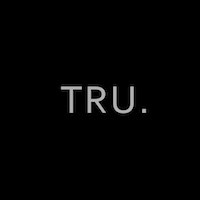Strip_Remix. Turning Gerhard Richter’s “Strip” into Sound and Video Animation
In this guest post, the artist _4.x and electronic music producer TRU. transforms a chance encounter with Gerhard Richter's monumental "Strip" at Berlin's Neue Nationalgalerie into a complete audiovisual reinterpretation. Watch the video above, or read on to discover how visual disorientation in a museum became an exploration of translating abstract art's core principles—uniformity, harmony, blurriness, and coincidence—into sound and moving image using Ableton Live and Videosync.
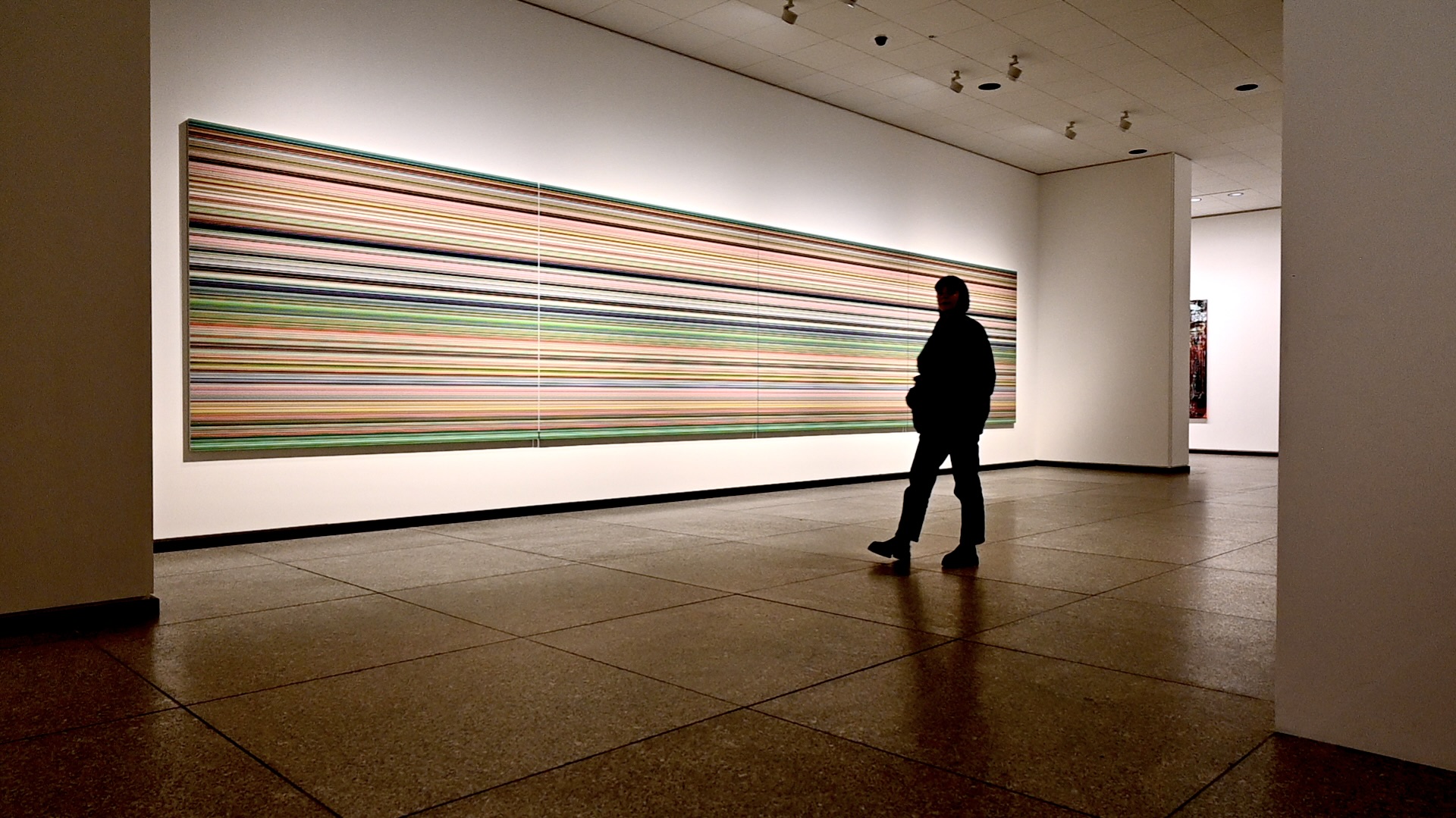
While researching current art exhibitions in Berlin in November 2023, I came across the Neue Nationalgalerie and the Gerhard Richter exhibition, '100 Works for Berlin'. Among the pieces on display were several abstract paintings, including the Birkenau Cycle: a series of four charcoal and oil paintings in which the artist explored the Holocaust and its visual representation.
Yet it was a completely different piece that caught my attention: Strip, a digital print on paper mounted between Alu Dibond and Perspex stretching over two by ten meters. It is part of Richter’s Strips series, for which he used digital image processing to divide some of his abstract works into segments, extend them by mirroring their axes and recombine them to create new visual structures. I was immediately impressed by the simplicity and clarity of this design, which fits perfectly with the minimalist architecture of the Neue Nationalgalerie, designed by Mies van der Rohe.
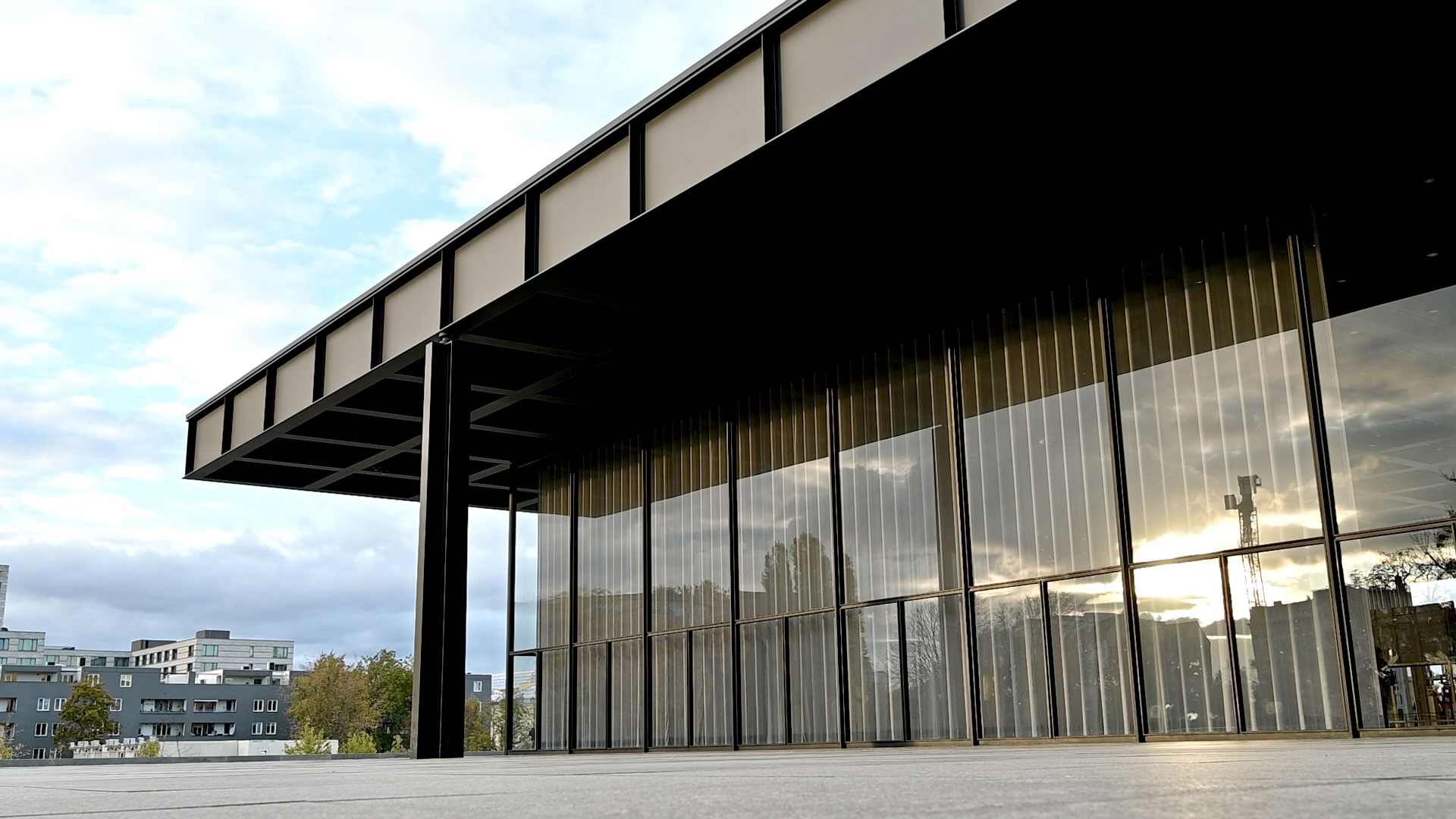
As I walked down the stairs, I spotted the piece just behind the exhibition entrance. When I saw it up close, the perfectly straight lines suddenly began to blur before my eyes. It was as if I were wearing glasses with the wrong prescription. I stood in front of the image for quite some time, watching the reactions of other visitors to the blurring effect. Finally, I sat down in the entrance hall facing the piece. I opened my laptop, put on my headphones and started to transform my impressions of the image into music.
Characteristics
In my opinion, the image is characterized by four main features: - Uniformity: The stripes run in parallel lines. They are unchanged in form and color and seem to continue endlessly. - Harmony: The color combinations are diverse yet balanced, radiating calm. - Blurriness: The eye cannot fully grasp the countless stripes, which repeatedly blur and evoke unease. - Coincidence: The concept and design of Richter's stripe paintings are based on chance, a principle that also greatly influences his artistic process. My aim was to translate these features into sound and video animation.
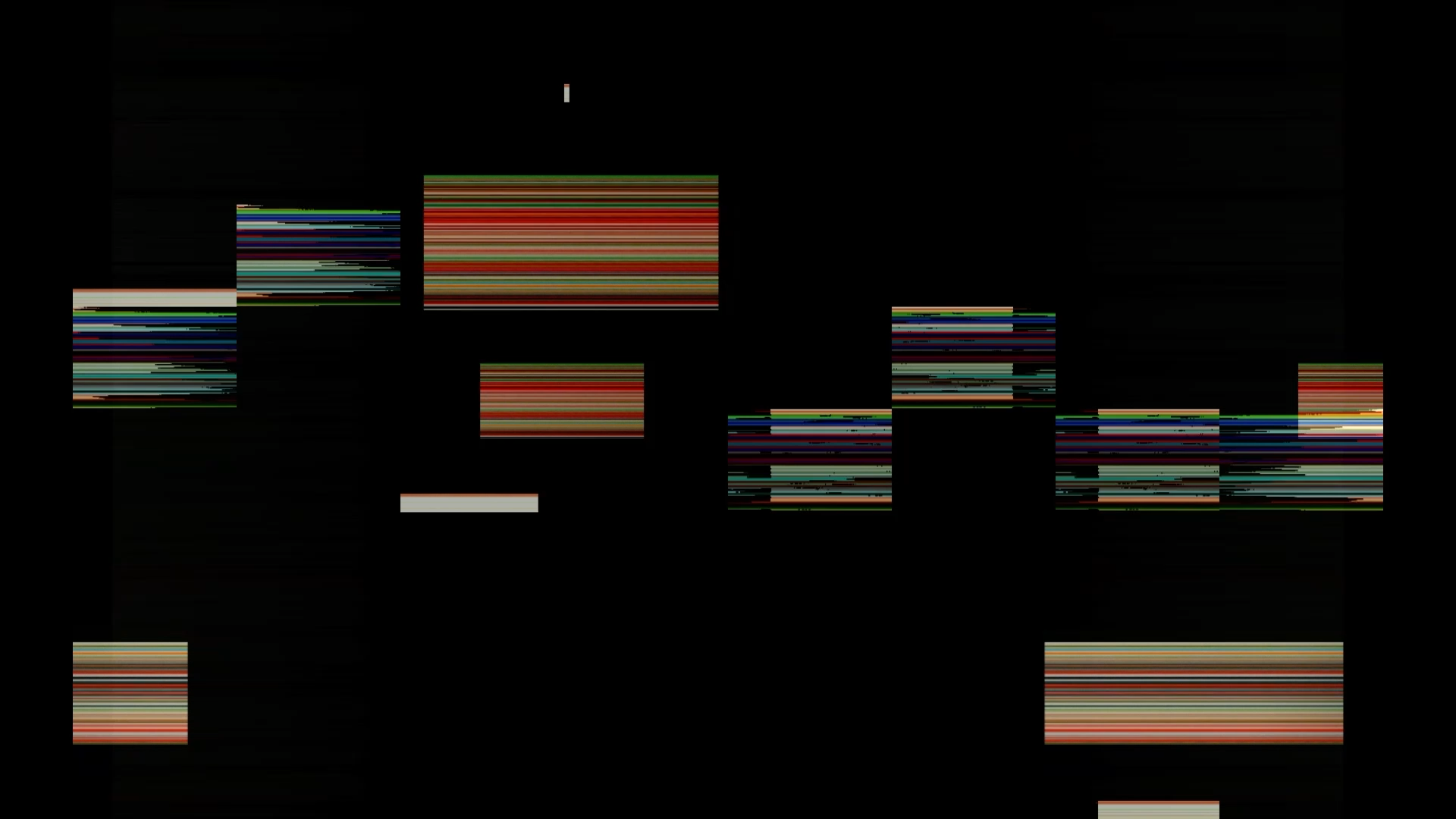
Before I explain my creative process, I would like to talk about why I categorize my sounds according to the four traditional vocal registers. Bass, tenor, alto and soprano. On the one hand, this helps me to assign them to distinct frequency ranges, ensuring clarity in composition. On the other hand, I generally try to create a balanced sonic image using as few sounds as possible, giving each one a clearly defined space in which it can be perceived.
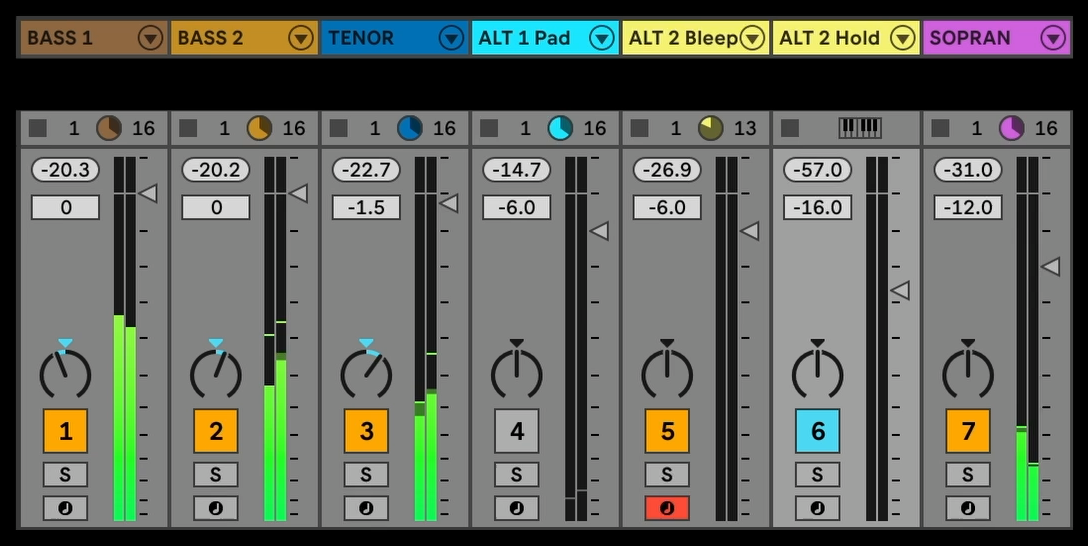
Uniformity
To reflect the uniformity of the work, I created minimalist sounds based on sine waves. A sine wave consists of only a fundamental frequency, with no harmonics. This gives it an extremely pure and simple sound. The challenge was to create an appealing and balanced soundscape from these simple tones. Therefore, I experimented with subtle effects that introduced slight variations to the sound without compromising its uniformity.
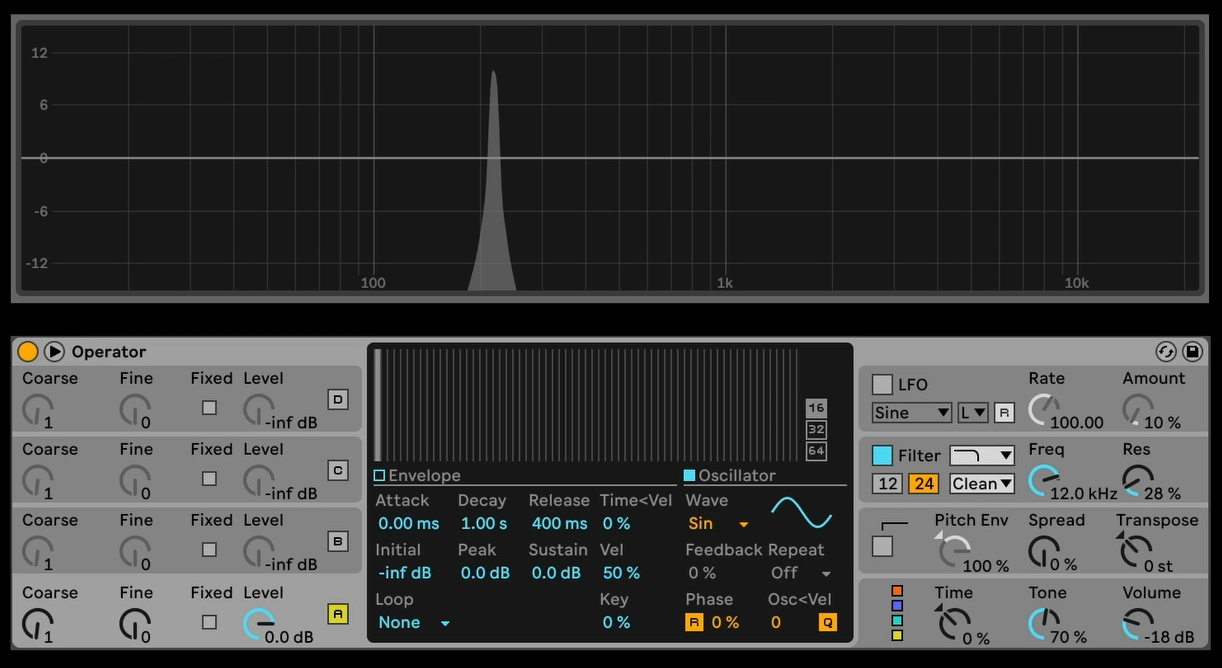
For instance, the frequency range of Bass 1 was enriched with a touch of noise using Ableton's Erosion effect and some modulation by a LFO.
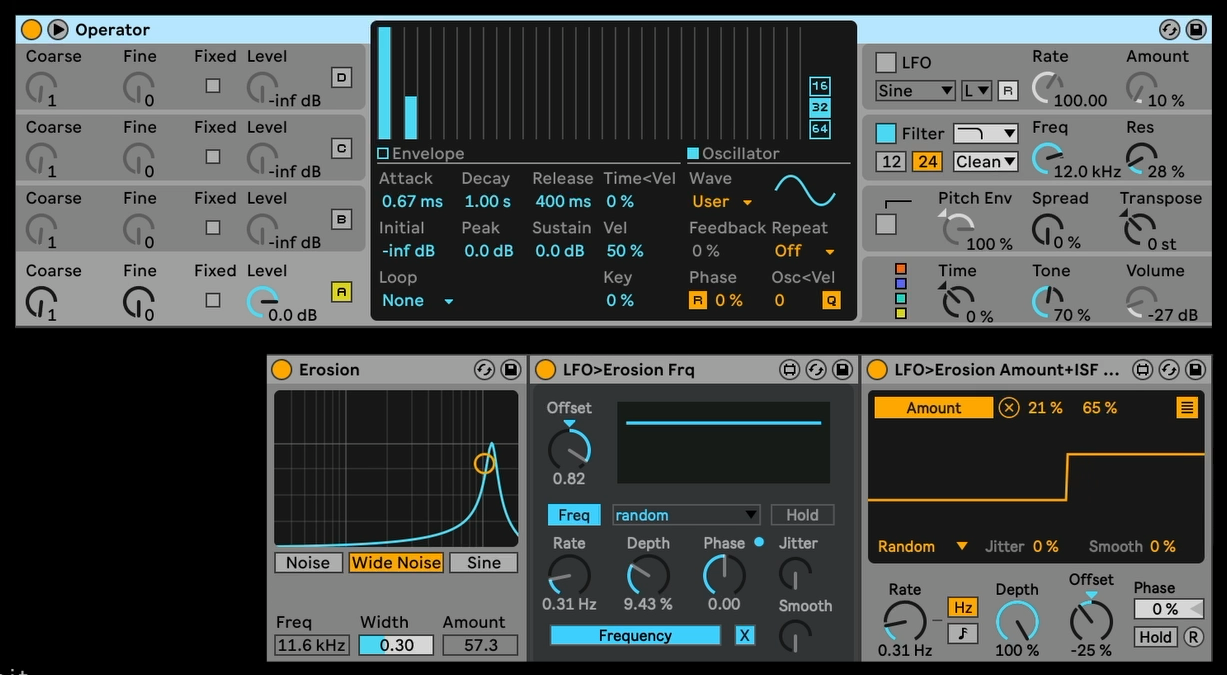
Bass 2 (played one octave higher) was subtly expanded and modulated through the Vocoder.
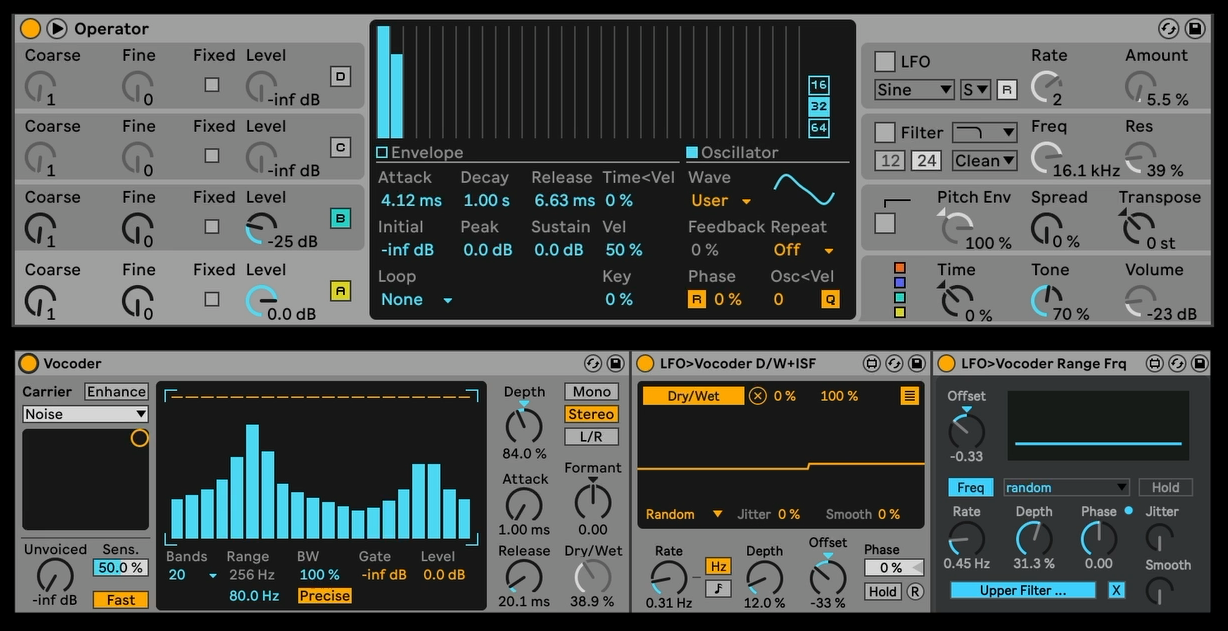
The Tenor sound is also based on sine waves and was enhanced using Spectral Blur and Spectral Resonator effects.
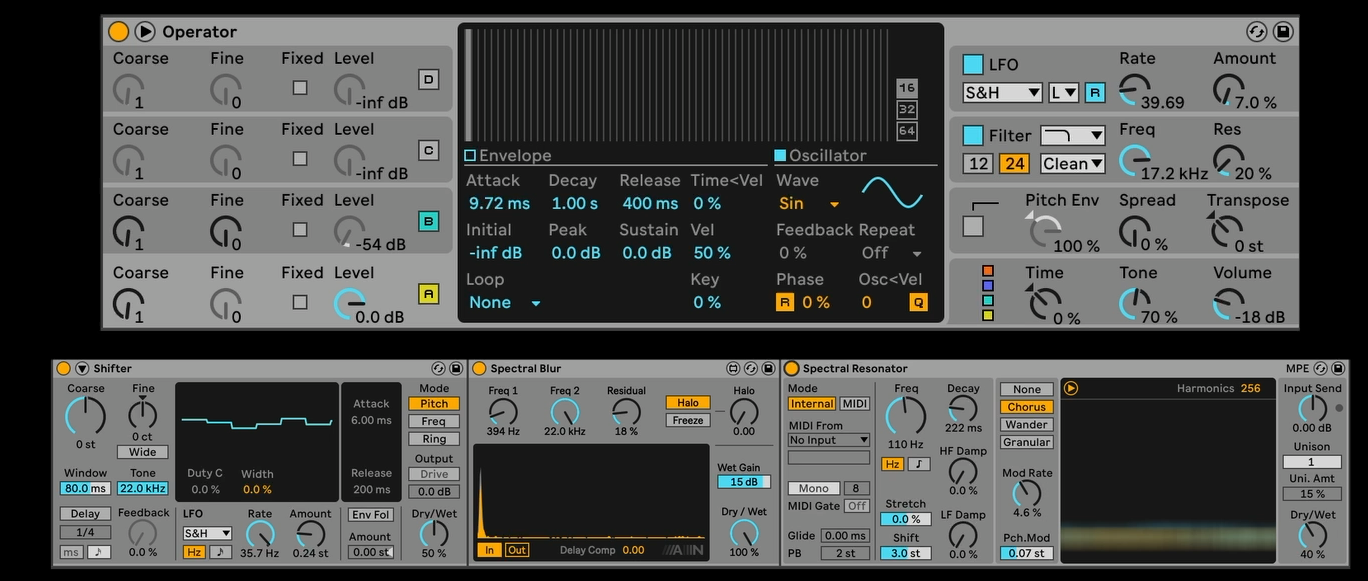
The principle of simplicity was further reinforced by the use of plain envelopes with fast attack and release times, which maintain maximum sound intensity during the sustain phase. In simple terms, the sounds are either on or off – mirroring the visual clarity of the stripes.

Harmony
Although the color sequences in Richter’s image were produced by chance, they appear harmonious and calm. I expressed this musically by largely grounding the composition in a single A minor chord and adding only a few variations to create subtle nuances in tone.
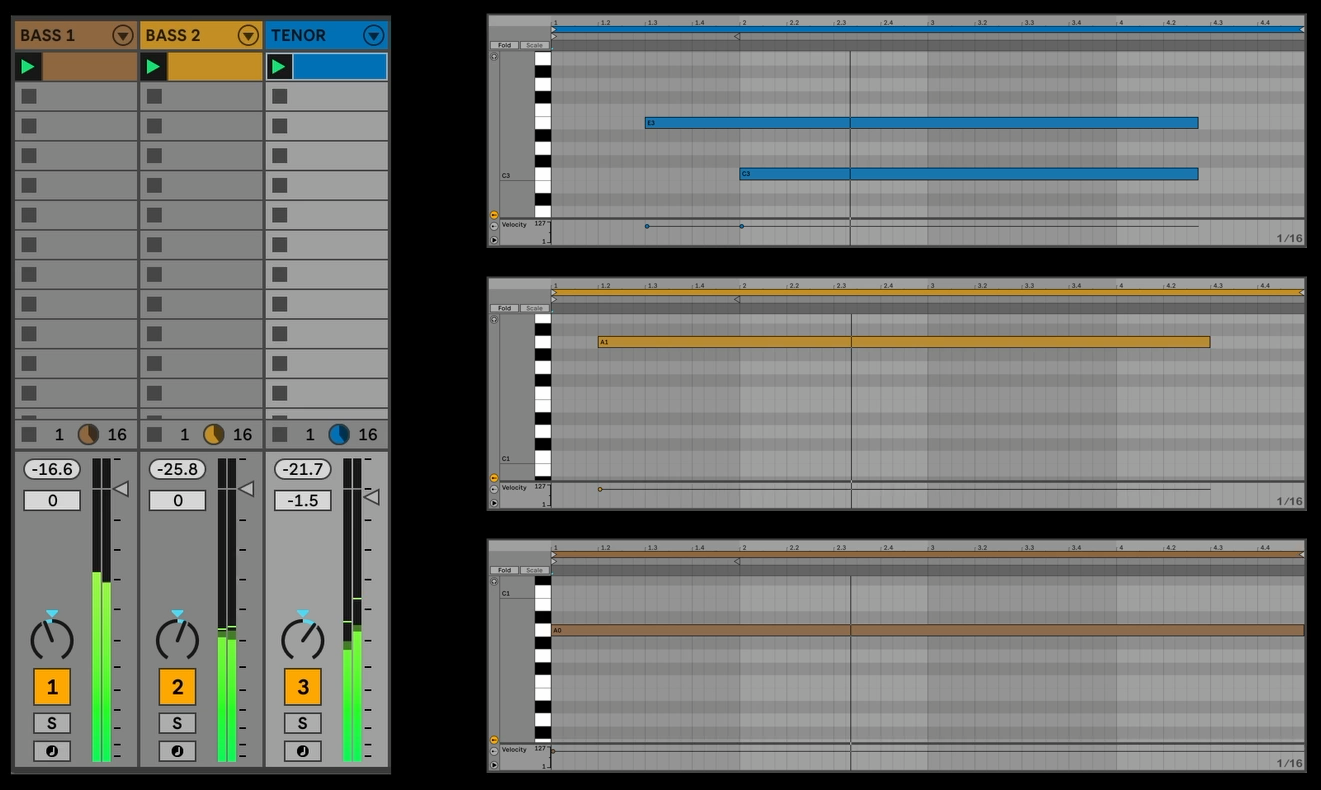
To counterbalance the static sounds of Bass 1, Bass 2 and Tenor, I introduced a voice that produces irregular impulses. This disrupts the harmonic foundation just enough to create unpredictability. Its pitch is randomly altered by modulation through the chord effect, adding further variation. This enables the sound to maintain its presence without ever becoming dominant.
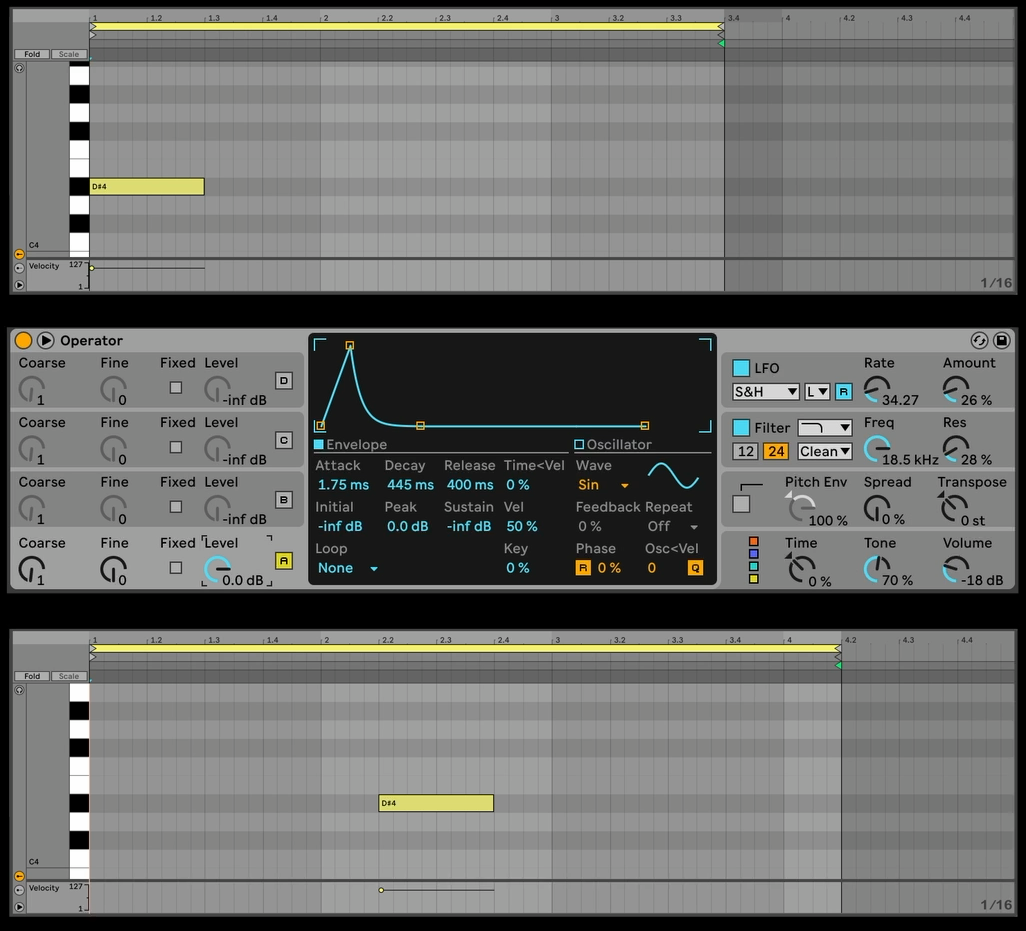
Blurriness and Discomfort
Another important aspect of the image is the blurred effect it creates when viewed. The countless stripes of various widths and colours are imperceptible to the naked eye, resulting in a blurred effect that also creates a sense of unease.
To recreate this effect musically, I experimented with sound modulations that altered the pitch slightly. I also added effects that altered the frequency spectrum of the sounds, creating subtle movement in the stereo image. These modulations oscillate constantly between the unprocessed and processed signals, creating the impression of sharpness and blurriness.
This is particularly evident in:
Alto 1 (Pad): Its envelope is continuously altered, sometimes swelling slowly and sometimes quickly, but always ending abruptly. When combined with the Autopan effect, which is randomly modulated by an LFO, the sound becomes intangible, mirroring the visual blurring of the stripes.
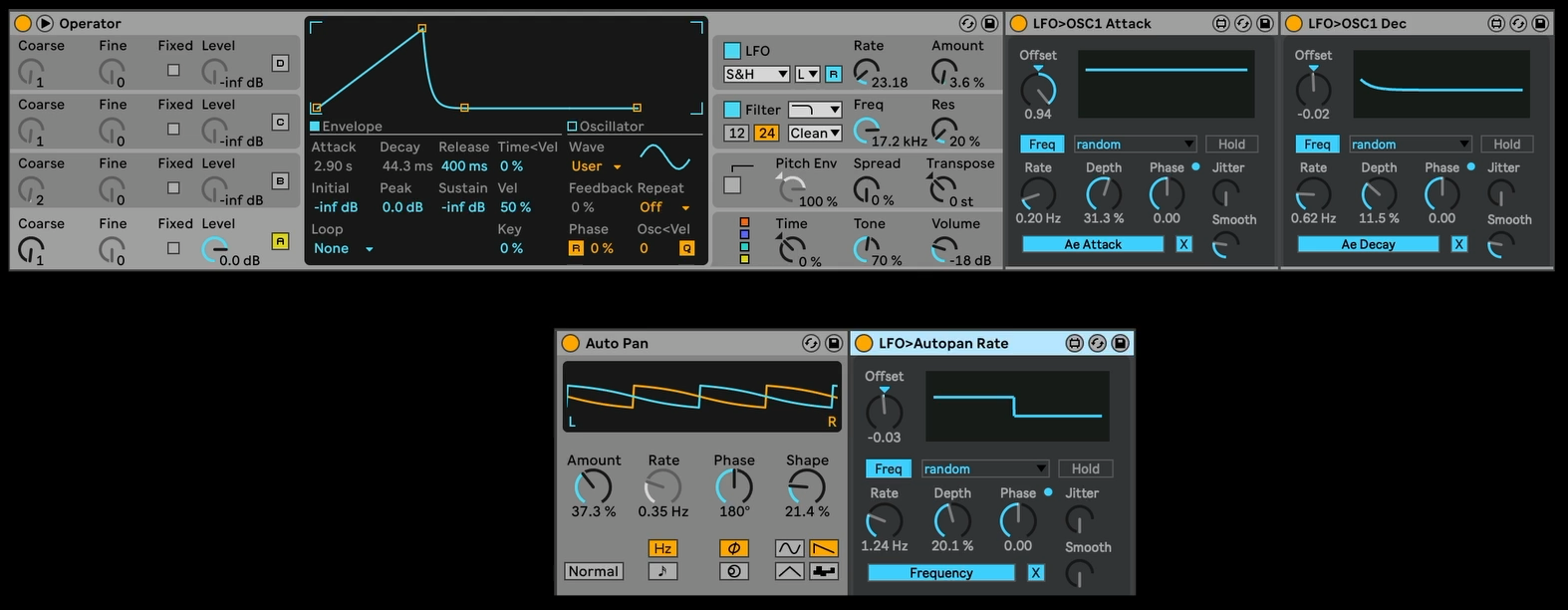
Soprano: The extremely high-pitched notes, which are more like shrill squeaks than tones, reflect the discomfort produced by the image. Even without effects, these frequencies are unpleasant to the ear. Additional modulation blurs or slightly detunes the tones, thereby reinforcing this unease.
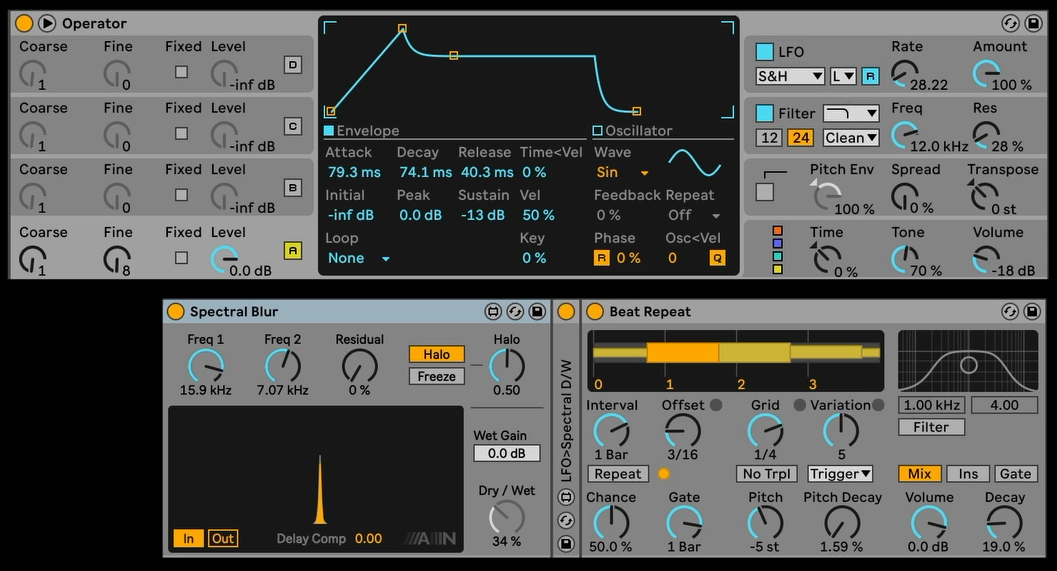
Coincidence
Richter once said: 'Sometimes it worried me a lot, and I saw my dependence on chance as a personal flaw' (1986). Yet chance has always been central to his artistic process.
My composition is characterized by randomness at various levels. Sounds can be made to start and stop, and their pitch can be changed. Besides that, more than thirty LFOs create modulations that are either subtle or clearly noticeable. They control not only the sound generators but also the effects sends and the effects themselves.
The result is a constantly shifting soundscape that never truly repeats, echoing the way Richter’s stripes seem to extend endlessly into infinity.
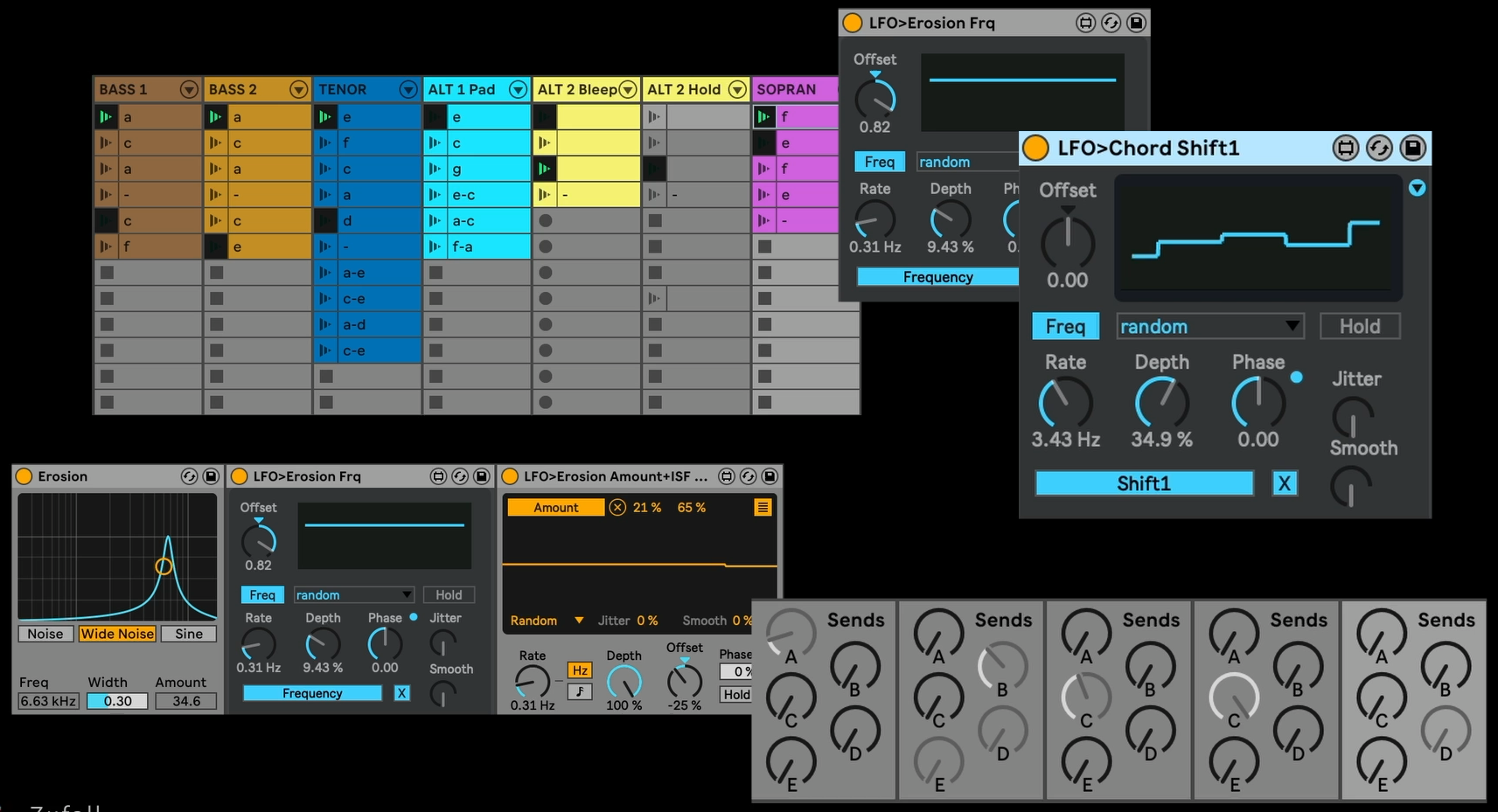
Video Animations
The final step was to translate the sounds into moving images. To do this, I used Videosync, a software tool that integrates directly into Ableton Live, allowing me to create, edit and modulate video material using sound, MIDI notes, envelopes and parameters.
Initially, I experimented with short clips taken at the exhibition. However, these proved too unstable and did not correspond well with the music. Ultimately, I narrowed down the visual source material to a single frontal photograph of Strip, which I then imported into Videosync’s Simpler. Each time a note is played, the image is displayed. This is similar to how its audio counterpart in Ableton Live plays audio samples.
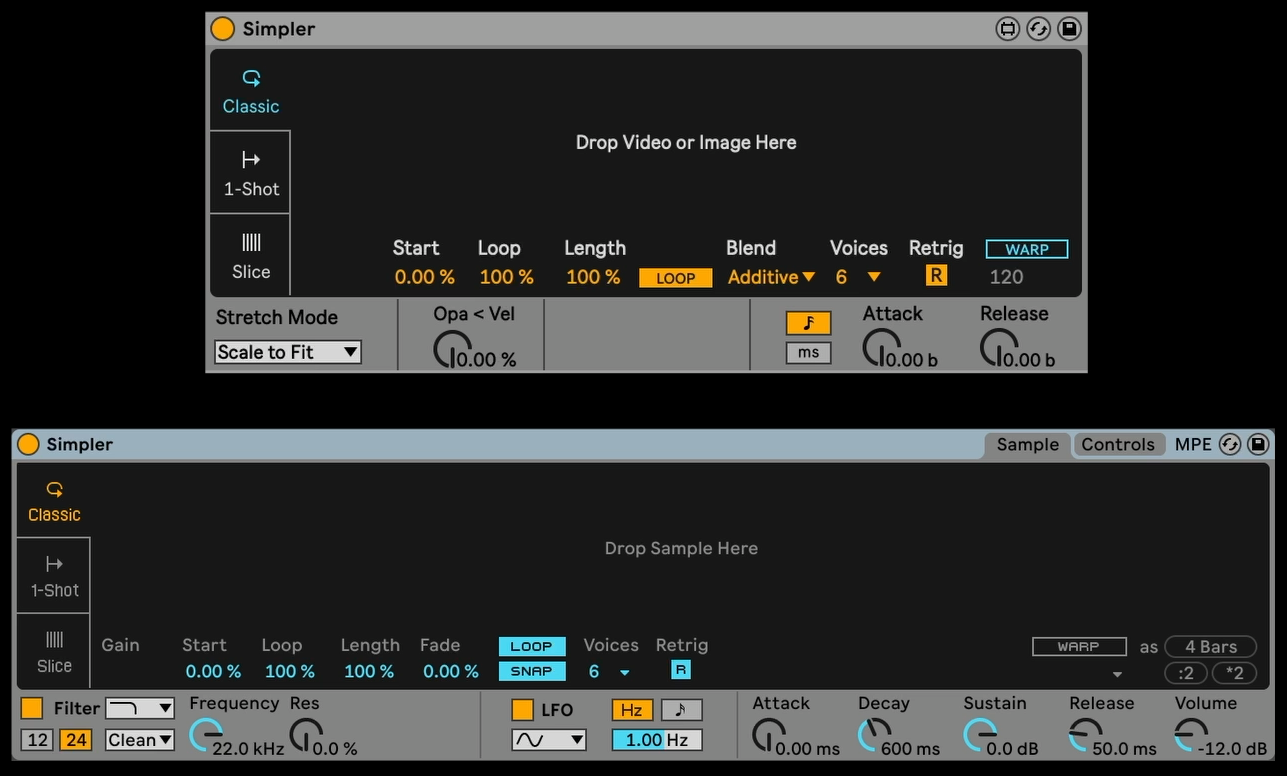
From there, I developed unique visual layers.
The Crop effect defines different sections of the image for each individual sound. The size and position of these sections are continuously altered by multiple LFOs.
The Mirror effect makes the stripes appear to move towards or away from one another. This is particularly effective for the deep frequencies of Bass 1.

The higher frequencies, such as Soprano, are visualized using narrow strips that fragment and disperse through the Displacement and ISF effects, which reflect the sound's unsettling sharpness.

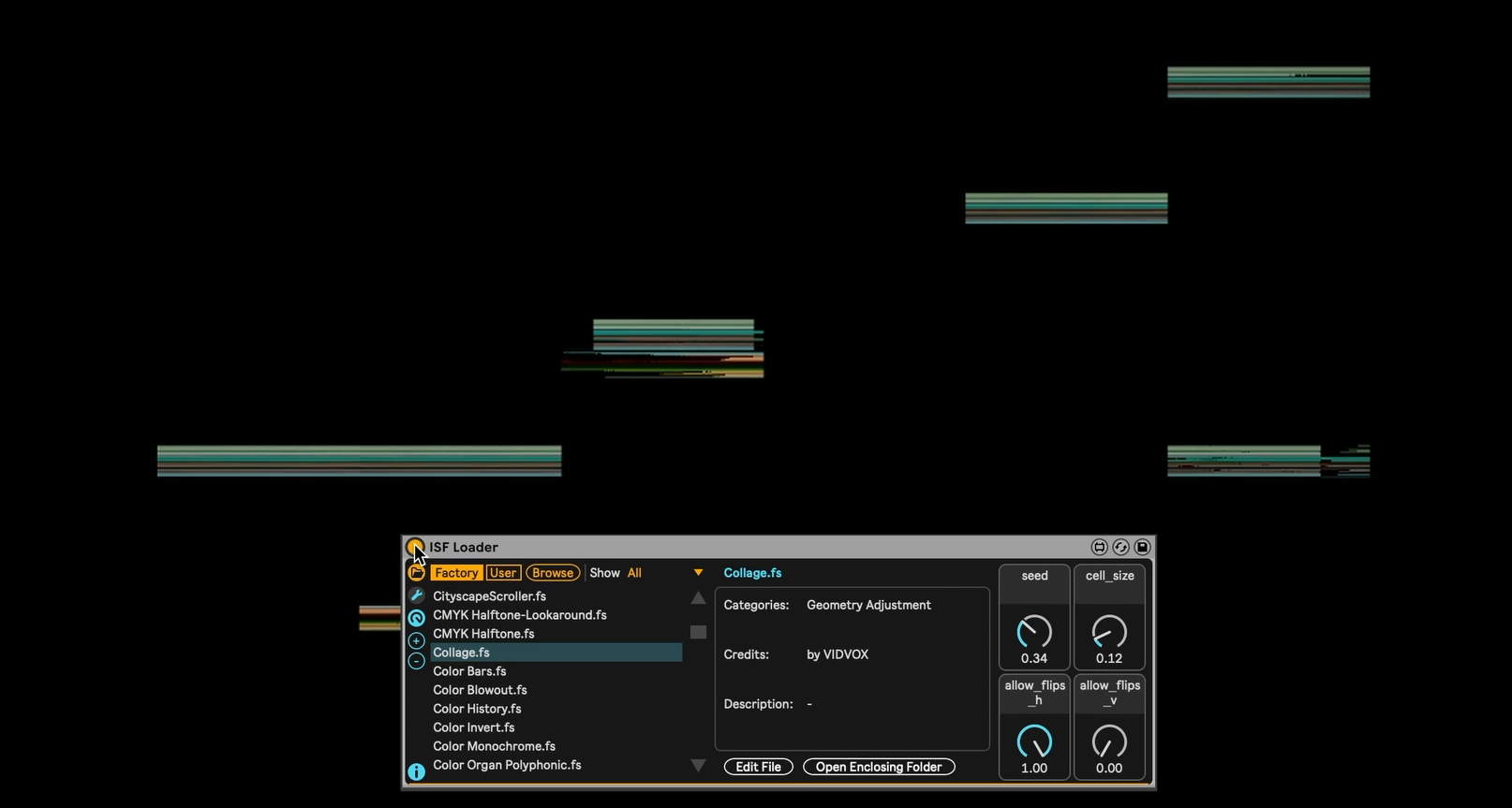
Only the Alto 1 voice has no independent image source. Instead, it modulates a BloomBlur effect on the master channel, causing all visuals to fade to a blur in sync with the sound.
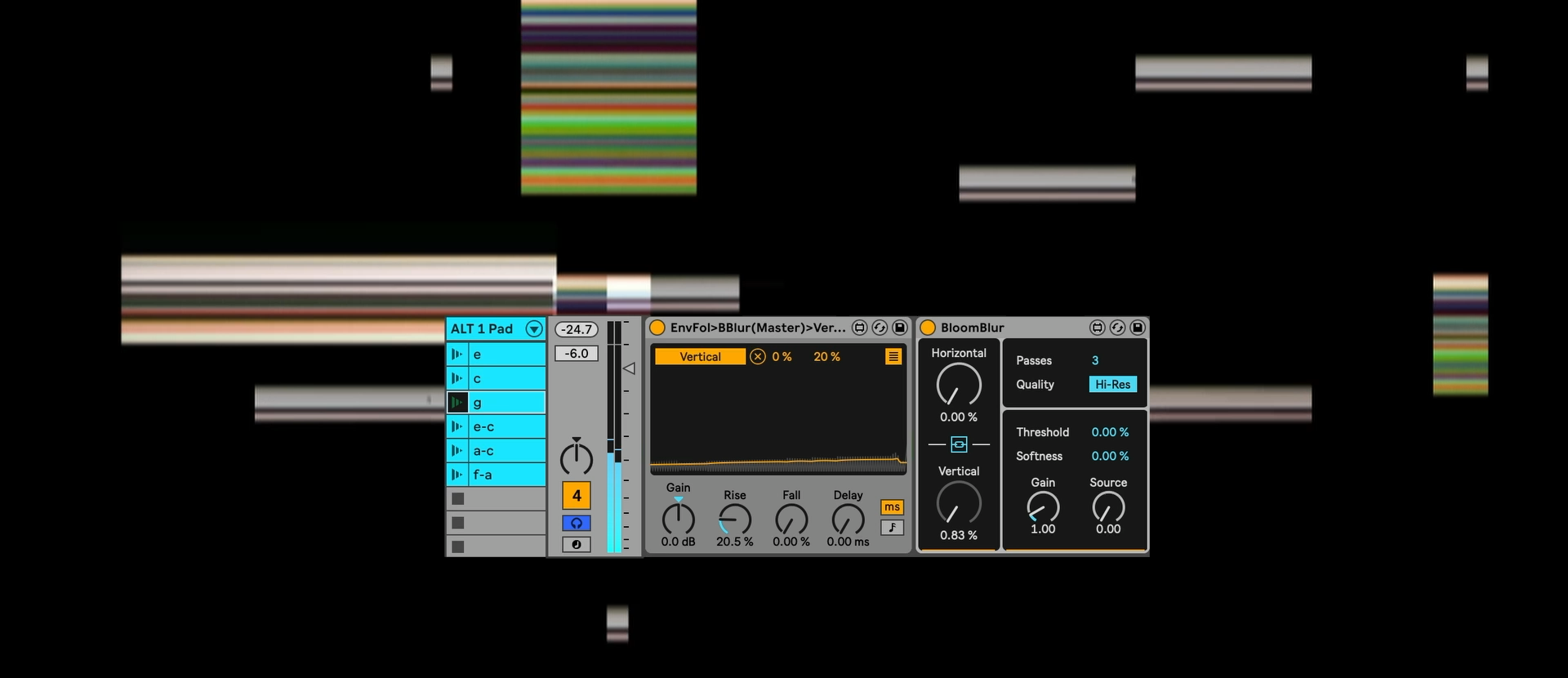
As with the music, randomization plays a vital role. Around thirty LFOs continuously modulate image sections and effects, producing constantly evolving visualizations. Like the soundscape, these animations seem to extend endlessly, drawing the viewer into infinity, just as Richter’s stripes do.
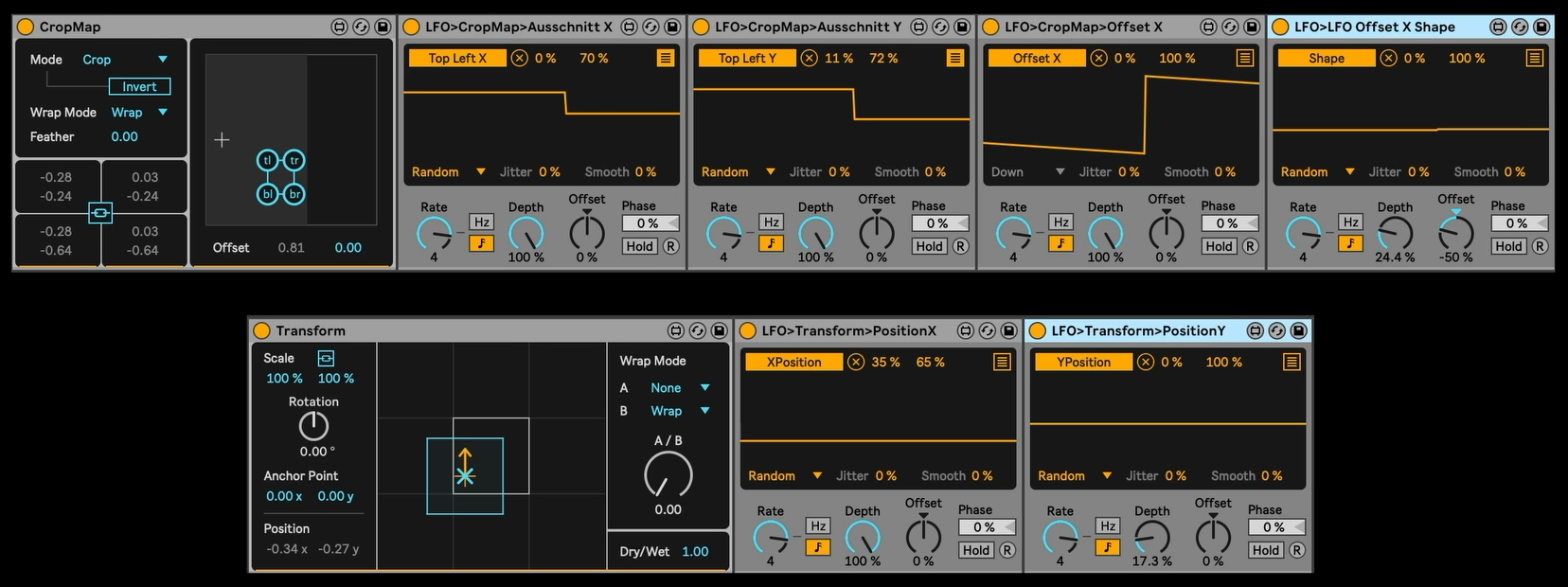
This project is my personal interpretation of Gerhard Richter’s Strip, which is part of the 100 Works for Berlin exhibition at the Neue Nationalgalerie and will be on display until 2026.
If you would like to find out more about my music and other projects, please follow the links below. Thank you for your interest!
_4.x
TRU.
